Paris is a great place to end our French and Italian adventure. The buildings, especially those built in the 17th Century French baroque architecture, are absolutely beautiful. Museums are located in imposing buildings, with columns, intricate decorations, large and small statues, gold leaf...... The apartment buildings are distinct with their attic windows, shutters and flower boxes and it's such a delight to look at them. Our apartment is right in middle of the Jewish quarter of the Marais, with windows overlooking Rue de Rosiers (and directly opposite the building where six people were killed in 1982 in the Goldenberg restaurant after two gunmen lobbed grenades into the diners and then opened fire with machine guns. The owner, Goldenberg, had previously lost his entire family in Auschwitz). The whole Marais area is full of kosher food stores and restaurants, and on the day we arrived (Armistice Day), the queues outside restaurants, especially the falafel shops were huge. There are numerous plaques around the Jewish Quarter, especially on school sites, remembering the thousands of men, women and children who were taken from their homes during World War 2 and shipped off to concentration camps to be killed.
We love the Marais area because it is not on the tourist map, and it is in a perfect location for seeing the sites of Paris
. There are several metro stops around the area, but it is also walking distance to the Notre Dame, St Germain, and the Bastille. The patisseries and boulangeries in this area have the most beautifully crafted goodies, and it's hard not to stop at every one to gaze at the food! There are also exquisite chocolate shops on just about every street corner, but Garth won't let me stop at them every day, especially if I have already toured the patisseries!
We spent our first few days here visiting some of the museums and sights on our 'to do' list. We revisited the Museum D'Orsay (which was an absolute favourite of ours on our last stay in Paris 5 years ago). It is located in an old railway station, with the exhibits being located in special rooms set up in the huge cavernous station area. The whole effect is extremely light and airy, which brings the best out of the paintings and the many sculptures. The speciality at the D'Orsay is the impressionist painters, with an entire floor set aside for Monet, Renoir, Sisley, Degas, Matisse, Manet, and Cézanne
. My favourite paintings were the water-lilies and haystacks painted by Monet - he managed to bring some quite mundane things to life, and it doesn't matter how many times I look at the haystacks, I just love them! Unlike at our last visit, taking photos has been banned which means no one has to suffer through my endless photos of these paintings! There were also some fabulous statues, especially the ones by Rodin (except the one called 'Gates of Hell' which was pretty awful!).
Given we were taken by the statues, we also visited Rodin's museum where we were lucky enough to see a temporary exhibition which showed how he made his statues. The museum is in two parts - many of his famous works (like The Thinker, the Kiss, the Burghers of Calais) are located in the gardens, whereas smaller pieces of work are located in the mansion where Rodin spent his latter years. His collection includes 6600 sculptures , 8000 drawings, 7000 objets d'art. I tried to calculate how many 'things' he needed to create each day of his working life (he didn't start being an artist until he was in his 20s) but it was too difficult! But I came to the conclusion he didn't spend an idle minute at any time of his life!
Given my fascination with Monet, we also headed to the Musee De L'Orangerie which has a vestibule created to house eight huge Monet paintings of water lilies and gardens from his home at Giverney
. The eight paintings show the passing of the hours from sunrise to sunset, using the water, the gardens and the flowers to create the perspective. There was a special exhibition of paintings in the museum by a French Post Impressionist painter and writer, Emile Bernard (1868-1941). His paintings were just fabulous, with many paintings of women, as well as many self paintings.
We visited the Arc-de-Triomphe and climbed the 280+ stairs up to the viewing platform at the top. It made us realise that all roads really do lead to the Arc-de-Triomphe - we counted 12 major roads! No wonder I had trouble crossing this roundabout many years ago before I realised there was an underpass! At the base of the Arch, there were a significant number of floral tributes from Armistice day celebrations the day before our visit.
We then headed down to Hôtel des Invalides, which houses a huge military museum covering many of Frances's contribution to the world's wars. Louis XIV had this magnificent building constructed in the 17th century to house France's wounded soldiers (6,000 initially). At the heart of the museum is a pantheon type building with a huge dome covered in 26 pounds of gold leaf, and housed underneath the dome is a huge marble coffin holding the remains of Napoleon. It is one heck of a sight, and shows how Napoleon is still one of France's heroes. We wandered through some of the parts of the Army Museum covering the 1st and 2nd World Wars, but I must admit to armoury fatigue after a while!
We revisited Saint Chapelle, which is a Gothic church with floor to ceiling stained glass windows, and is the most stunning sight
. It was built by King Louis IX in 1242, The King (who later became Saint Leon) had the church built to house the Crown of Thorns, which he didn't actually manage to obtain, dying in its pursuit. There are 15 separate panels of stained glass with more than 1100 different scenes from the bible. The windows have been under a $10m restoration program which has been going on over the last 8 years.
Finally we visited the Conciergerie, which started its life in the 6th century as a royal residence, then became a council and government building in the 11th Century, but ended up from the 14th century onwards as a temporary prison for some high profile prisoners prior to their execution, such as Marie Antoinette, Ravaillac (Henry IV's assassin) and Robespierre (one of the leaders of the French Revolution, and the main perpetrator of 'the terror' ie lopping off rich people's heads!). We were able to walk through the Prisoners' Gallery and see the cells of the wealthy (one bed in a small cell), the less wealthy (two beds in a small cell) and the poor (hay on a floor and no beds at all!!). There is also a reconstituted cell of Marie-Antoinette's dungeon and chapel, plus info on her good demeanour on the way to the scaffold!
I almost forgot - we also popped into the Pompadou Centre, with its ugly coloured pipes set on the outside of the building. We could see the Centre from our apartment last time we stayed in Paris, and thought it was an unfinished building, but then found out that it is some ultra modern building, much feted in Paris! It houses a modern art museum which we managed to visit for an hour or so. It has some quite fabulous, thought provoking pieces, but also some that looked like a two year old had drawn them! Not quite in the same league as the beauties we saw in the D'Orsay!!
Paris
Friday, November 14, 2014
 Paris, Île-de-France, France
Paris, Île-de-France, France
Other Entries
-
30Pompeii
Oct 0738 days prior Sorrento, Italyphoto_camera57videocam 0comment 0
Sorrento, Italyphoto_camera57videocam 0comment 0 -
31Capri
Oct 1035 days prior Naples, Italyphoto_camera32videocam 0comment 0
Naples, Italyphoto_camera32videocam 0comment 0 -
32Mt Vesuvius and Herculaneum
Oct 1134 days prior Naples, Italyphoto_camera56videocam 0comment 0
Naples, Italyphoto_camera56videocam 0comment 0 -
33Off to Bologna
Oct 1530 days prior Sorrento, Italyphoto_camera6videocam 0comment 0
Sorrento, Italyphoto_camera6videocam 0comment 0 -
34Bologna
Oct 1530 days prior Bologna, Italyphoto_camera41videocam 0comment 0
Bologna, Italyphoto_camera41videocam 0comment 0 -
35Venice
Oct 1827 days prior Venice, Italyphoto_camera44videocam 0comment 1
Venice, Italyphoto_camera44videocam 0comment 1 -
36Verona
Oct 2322 days prior Verona, Italyphoto_camera45videocam 0comment 1
Verona, Italyphoto_camera45videocam 0comment 1 -
37Off to Chambery in France, via Torino
Oct 2520 days prior Turin, Italyphoto_camera11videocam 0comment 0
Turin, Italyphoto_camera11videocam 0comment 0 -
38Chambéry
Oct 2619 days prior Chambéry, Francephoto_camera14videocam 0comment 0
Chambéry, Francephoto_camera14videocam 0comment 0 -
39Toulouse
Oct 2718 days prior Montfrin, Francephoto_camera14videocam 0comment 0
Montfrin, Francephoto_camera14videocam 0comment 0 -
40Albi
Oct 2916 days prior Castres, Francephoto_camera27videocam 0comment 1
Castres, Francephoto_camera27videocam 0comment 1 -
41Cordes-Sur-Ciel and St Cirq Lapopie
Nov 0113 days prior Issigeac, Francephoto_camera13videocam 0comment 0
Issigeac, Francephoto_camera13videocam 0comment 0 -
42Issigeac
Nov 0113 days prior Issigeac, Francephoto_camera34videocam 0comment 1
Issigeac, Francephoto_camera34videocam 0comment 1 -
43Meuzac (and other tiny towns)
Nov 0410 days prior Coussac-Bonneval, Francephoto_camera17videocam 0comment 0
Coussac-Bonneval, Francephoto_camera17videocam 0comment 0 -
44More chateaux and towns around Meuzac
Nov 059 days prior Coussac-Bonneval, Francephoto_camera47videocam 0comment 0
Coussac-Bonneval, Francephoto_camera47videocam 0comment 0 -
45Oradour-sur-Glane
Nov 104 days prior Limoges, Francephoto_camera12videocam 0comment 0
Limoges, Francephoto_camera12videocam 0comment 0 -
46Limoges
Nov 104 days prior Limoges, Francephoto_camera11videocam 0comment 0
Limoges, Francephoto_camera11videocam 0comment 0 -
47Paris
Nov 14 Paris, Francephoto_camera39videocam 1comment 0
Paris, Francephoto_camera39videocam 1comment 0 -
48Photos from Paris (continued)
Nov 173 days later Paris, Francephoto_camera33videocam 0comment 0
Paris, Francephoto_camera33videocam 0comment 0 -
49Norwich
Nov 206 days later Mulbarton, United Kingdomphoto_camera4videocam 0comment 0
Mulbarton, United Kingdomphoto_camera4videocam 0comment 0 -
50Family in Watford
Nov 2410 days later London, United Kingdomphoto_camera8videocam 0comment 0
London, United Kingdomphoto_camera8videocam 0comment 0 -
51Bath
Nov 2410 days later Bath, United Kingdomphoto_camera27videocam 1comment 0
Bath, United Kingdomphoto_camera27videocam 1comment 0 -
52Heathrow and home
Nov 2612 days later Bath, United Kingdomphoto_camera2videocam 0comment 0
Bath, United Kingdomphoto_camera2videocam 0comment 0

 Paris, Île-de-France, France
Paris, Île-de-France, France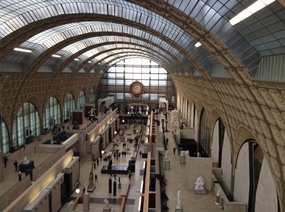
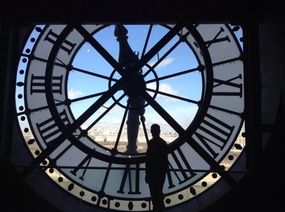
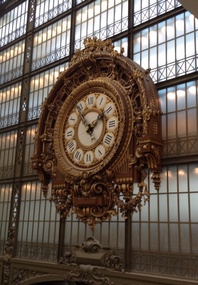
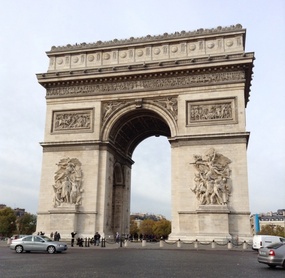



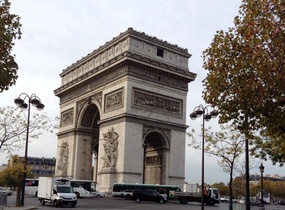

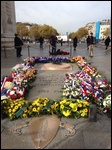
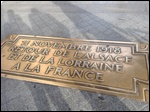

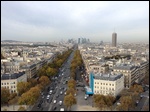
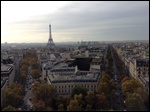
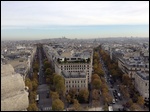

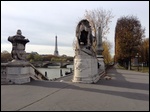

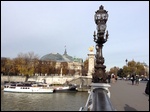



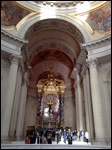
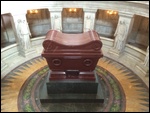
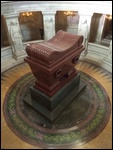
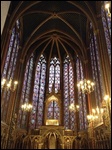



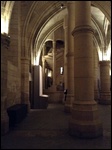
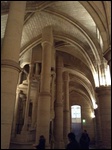
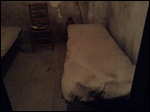
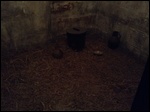
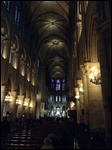
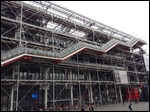
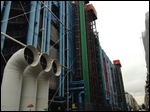
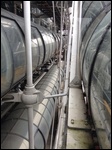
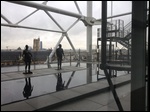
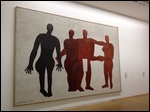
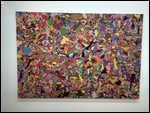
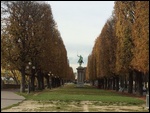
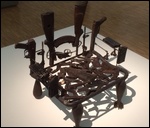
2025-05-23